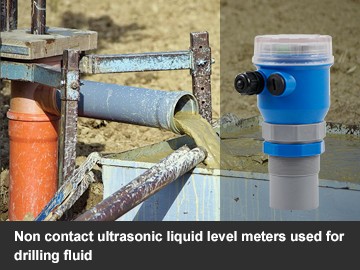Non contact ultrasonic liquid level meters used for drilling fluid
In recent years, the non contact ultrasonic liquid level meter has made a great breakthrough in the drilling platform. It also means that the non contact measurement method will be one of the most important methods of liquid level measurement. However, it is currently mainly used for drilling fluid level monitoring in mud tanks, but a few people believe that the use of submersible level sensors can also meet my needs, and the price and maintenance costs of submersible level meters are very low. But in fact, if we use the common type of level sensor is not able to meet our needs.
As I said before, the greatest feature of non contact ultrasonic liquid level meter is that it can be measured without touching the medium. As we all know, drilling fluid is drilling mud. Its main function is to provide static liquid pressure and prevent formation fluid from entering the well, thus keeping the bit cool and clean. In addition, the mud's special function is to prevent reservoir damage and avoid corrosion. It is worth noting that drilling fluid is usually stored in mud pools or mud tanks, and the level of mud pools will constantly fluctuate with the rotation of the motor. In this case, it is unreasonable to use submersible level sensors, because the impact force generated by the fluctuating liquid will affect the accuracy of the probe. Not only that, drilling fluid is highly corrosive. Although most of the current submerisble level sensors are made of 316 stainless steel, if immersed in corrosive medium for a long time, it will definitely be corroded and oxidized. This is the inevitable trend of physical material loss, and it is not my personal guess.
Although the advantages of the non contact ultrasonic liquid level meter do not attract your attention, its actual measurement effect is unmatched by the submersible level sensor. However, this requires us to slowly explore and explore in the later liquid level measurement, and find more methods to complete the "impossible" task.






